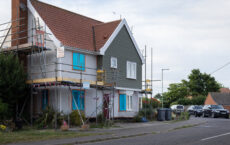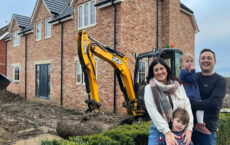From rebuilds to renovations – understanding the different types of self build projects
Building your own home can be an incredible experience; the perfect way to create a property that meets your exact needs in your chosen area. In the first instalment of our self build mini series we looked at how to find a self build plot . In this article we’ll explore the different types of self build project.
A self build mortgage is pretty self explanatory: a loan that is taken out to build a property. However, it’s important to understand what falls under the term ‘self build’, as funding a self build project with the wrong mortgage will most likely breach the terms of your agreement.
Self build land tends to fall into one of three categories.
Greenfield sites are the type that most people think of when it comes to self build, and this refers to land that has never been previously built on. As the name suggests, some greenfield sites are simply green fields, but they can also be agricultural land or forestry areas. Brownfield sites on the other hand are previously developed land, often used for industrial, commercial, or even agricultural purposes, but that now lies derelict and redundant. Urban infill is one that’s not talked about as frequently . This is the development of new homes on vacant or underused land in existing urban areas.
Beyond this, there are different types of self build, from expanding your current home, to starting from scratch.
New build self builds
When hearing the term ‘self build’, many people picture an empty plot of land and building a completely new house. In fact, 31% of respondents to our survey said that this is the type of self build project they are interested in completing. This can be a great way to completely design the house of your dreams, especially if you’ve managed to find a plot in the perfect location. You don’t have to adhere to an existing structure and can specify every inch of the house to your exact wants and needs – subject to approved planning permission of course!
Knockdown and rebuild
A self build mortgage isn’t only required in cases such as the above where a brand-new property is being developed, but is also needed in other circumstances such as for major renovation works or ‘knockdown and rebuilds’.
Sometimes, finding an empty plot of land that is the right size and in a favoured location can be easier said than done. Fear not, as the second type of self build project is a knockdown and rebuild. If you find a perfect plot, but with a less-than-perfect property already built on it, this type of self build could be for you.
There are a variety of reasons why you may choose to demolish the existing property and start again. It may be in a poor state, requiring so much renovation that it is more cost-effective to knock it down and start fresh. If the house is old, it may have little to no insulation or no central heating, or could simply be laid out in a way that does not suit you and your family. You shouldn’t sacrifice the perfect plot because of an existing house.
Whilst you’ll need to factor in the cost to demolish the existing building, one advantage of a rebuild over a renovation is that if you knock the existing building down to ground level, you can claim back VAT.
It’s also likely that the current property already has access to services such as electricity, water and mains gas. It may also be easier to get planning permission.
Major renovation
The third type of self build is a major renovation. If you’ve found a property in the perfect area, but want to make major improvements to it, this could be the right project for you. A major renovation does not involve tearing the entire house down but may include multiple elements being ripped out and replaced, leaving the property looking vastly different from the start.
Of course, many homeowners complete renovations from time to time, and not every one is classed as a self build. For small renovations that have little to no impact on the short-term habitability of the property, most lenders will allow you to borrow more on top of your residential mortgage to cover the necessary funds. Self build renovations are much larger, and often more disruptive, so borrowing the funds through a residential mortgage is likely to be a breach of contract.
Whether or not you’ll need a self build mortgage depends on a number of factors. It is likely you’ll need a self build mortgage if the following applies:
- The property is uninhabitable and occupants need to live in a separate dwelling
- The property is left without a kitchen and/or bathroom facilities for an extended period of time
- Work is being undertaken which alters the structural elements of a property that are essential to its stability.
If you’re unsure, speaking with a mortgage advisor can help you avoid problems later down the line. It’s also a good idea to get the advice of a builder as early on as possible so that you fully understand the pros, cons and implications of each type of self build project before you begin.


















